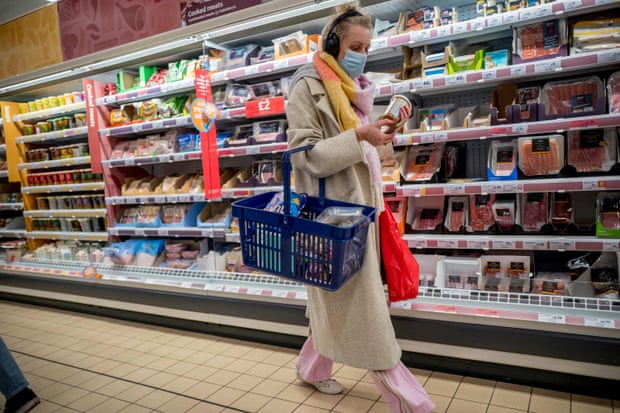UK inflation rises to 5.5%, highest level in 30 years
Soaring energy bills and rising prices for clothes and used cars push numbers up in January
UK inflation hit its highest rate in three decades in January, with the impact of rising energy bills rippling through a wide range of goods and services, adding to pressure on the level of household life.
The Office for National Statistics (ONS) said the consumer price index (CPI) measure of inflation rose to 5.5% in January from 5.4% a month earlier, driven by the prices of clothing, shoes and furniture.
City economists had forecast that the inflation rate would remain at 5.4%. The ONS said inflation was last higher in March 1992, when it stood at 7.1%.
With inflation expected to hit over 7% in April, the latest increase is expected to increase pressure on the government, while putting emphasis on the Bank of England to raise interest rates again.
Business and consumer groups have warned that rising prices since last summer will hurt living standards and push more businesses into insolvency. Lobby group CBI said the government must respond by cutting taxes on investment to boost productivity and allow businesses to deliver sustainable annual pay rises.
Suren Thiru, chief economist at the UK Chambers of Commerce, said he expected the Bank to raise rates at its March meeting to 0.75%. Threadneedle Street raised rates in December and February to the current level of 0.5% amid rising inflationary pressures.
However, Thiru warned that tightening monetary policy too quickly could undermine confidence and the broader recovery. “[It] will do little to rein in the global factors driving the current inflationary push,” he said.
“More needs to be done to limit the unprecedented rise in costs facing businesses, including financial support for those struggling with skyrocketing energy bills and delaying April’s National Insurance hike. “
Despite the rise in the annual inflation rate, the ONS said prices for goods and services fell a modest 0.1% in January after restaurant and hotel prices – which played a role important in the pre-Christmas inflationary spurt – retreated.
Rising costs for some household items also pushed up inflation, although this was partially offset by lower gasoline and diesel prices in January after record highs at the end of 2021.
Although there were price cuts for clothes and shoes during the traditional high street sales season at the start of the year, the ONS said these were the most slight decline in January since 1990. The CPI index being calculated as the annual variation of a basket of goods and services, which has aggravated inflation.
Most economists expect inflation to ease in the second half of the year after peaking above 7% in April, when energy regulator Ofgem will raise the ceiling on energy bills.
The cap hike will add more than £600 to annual bills but could be increased again in October unless the cost of gas and petrol in international markets drops as expected this summer.
The Bank of England said last month that inflation is expected to decline over the next two years to its target rate of 2% once interest rates rise above 1%.
Samuel Tombs, the UK’s chief economist at consultancy Pantheon Macroeconomics, said inflation is expected to hit 5% by January next year and then fall below the Bank’s target by April 2023.
He said the easing of Covid supply chain restrictions on imports is expected to increase the number of new cars being imported into the UK and subsequently drive down the cost of used vehicles, which have greatly increased during the pandemic.
“As a result, we believe the near-term strength of CPI inflation will convince the MPC [monetary policy committee] to raise the bank rate to 0.75% in March and 1.00% in May, but the gloomy medium-term situation will then convince the committee to stop there,” he added.
How food, clothing, energy, furniture and transport drove up inflation
Here’s a breakdown of the price rises that drove UK inflation to a 30-year high of 5.5% in January:
Food and non-alcoholic beverages: +4.3% over last year
Alcoholic beverages and tobacco: +3.2%
Clothing and footwear: +6.3%
Housing, water, electricity, gas and other fuels: +7.1%
Furniture, household equipment and maintenance: +8.4%
Health: +2.2%
Transport: +11.3%
Communications: +1.1%
Leisure and culture: +2.9%
Education: +4.5%
Restaurants and hotels: +4.7%
Miscellaneous goods and services: +1.7%
Source: theguardian.com


Comments are closed.